Unlock Your Inner Power: Mastering the 7 Chakras with Kundalini Rising!
- Details
- Written by CrystalWind.ca
- Views: 14332

KUNDALINI RISING, PART 1: THE ROOT CHAKRA
“Until you make the unconscious conscious, it will direct your life and you will call it fate.” ~ Carl Jung
Imagine your spine is a tree trunk with seven ascending flowers (chakras) growing out of it. These flowers are either opened or closed depending upon your health, mental disposition, and ability to communicate with the cosmos. These flowers emit a distinct energy unique to your personal frequency, but they are profoundly interconnected, both with each other and with the greater cosmos.
Muladhara, the root chakra.
If the crown chakra is the Übermensch (overman) of the Kundalini process, then the root chakra is the Untermensch (underman). But don’t allow this lowly connotation to fool you into thinking that the root chakra is any less important, or even less powerful. After all, there cannot be an over without an under. There cannot be a flower without its roots. Opening the root chakra is reconnecting with the often neglected, often suppressed, savage, prima materia heart of man. It’s a tapping into the latent energy of the unconscious realms hidden beneath the soil of the human condition, dark and muddy, but alive in a way that subsumes all levels of individuation.
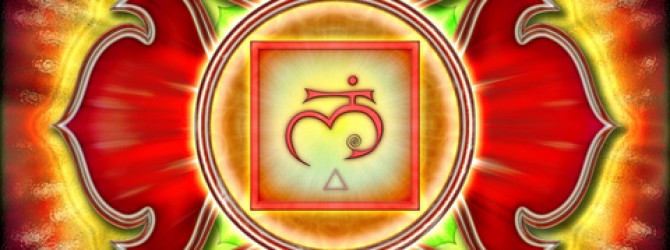
The root chakra is symbolized by a red lotus with four petals. It is located at the base of the spine in the coccygeal region (tailbone area), while its central activation point is located within the perineum. It is the lowest vibration of the body and has the slowest wavelength.
The four petals directly denote stability and foundational survival, and are indirectly related to the four sides of the square, the four directions, and the four elements: earth, air, fire, & water. The chakra extends downward, connecting us to the earth while ‘grounding’ us. It is related to instinct and to the basic ‘fight or flight’ mechanism of the human condition. Known also as the seat of Kundalini, dormant kundalini rests here, wrapped around the four-petaled lotus, just waiting to be awakened.
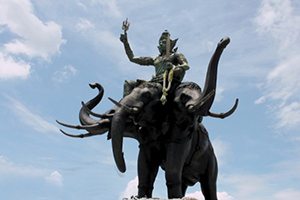
The deity associated with this region is Indra who is often depicted riding a white seven-tusked elephant. The tusks symbolize the seven elements vital to physical functioning. He personifies the underworld, the unconscious abyss and the interconnectedness of all things rooted. His lesson is that Humankind only seems to be an un-rooted being, but his un-rootedness is an illusion. We’re like walking trees, but all trees have roots. Like Allan Watts said, “Nature is always differentiated unity, not unified differences.”
The root chakra is the energy center of the entire Kundalini process, but it is also the toxin-release center. It connects us to the earth because that is where we receive all of the vital nutrients essential to our survival, and it is also where body toxins are released. The root chakra doesn’t just ground us physically, it also grounds us temporally by keeping us in the present moment.
Those whose root chakra is open, tend to be healthier, more balanced and grounded. They tend to be less fearful and more centered. Those whose root chakra is closed or under active, are often fearful, lack focus nervous, imbalanced and disconnected, and tend to suffer from depression, autoimmune deficiencies, especially dealing with the blood.
Root Chakra Meditation/ How to Open the Root chakra
While meditating, focus your energy (or Qi) on the base of the spine. Notice how you feel about your connection to the earth. Literally relax and ‘drop’ your kegel muscles. Imagine your spine branching down into the earth like the roots of a tree.
Visualize yourself receiving the full bounty of the earth’s ‘nutrients.’ Other ways of opening the root chakra are through aromatherapy, massage, yoga and exercise. Exhale the toxins and inhale the energy. Uncoil the Kundalini ‘snake’ wrapped around your sacred roots and guide it to the next level; to the second chakra: The Swadhisthana.
KUNDALINI RISING, PART 2: THE SACRAL CHAKRA
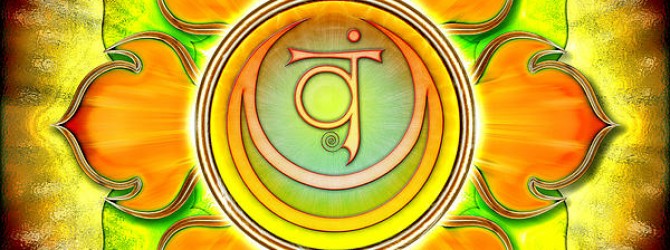
The more conscious we become of how our energy moves through our body, through the seven flowering Chakras, the more we work to move our energy in healthier ways. The more we move our energy in healthier ways, the more we discover that which is cosmic, infinite, and unconditional in us.
In our last article we opened the Muladhara chakra, or root chakra. Now moving up to the second level: The Swadhisthana or sacral chakra. The fundamental quality of this chakra is pure creativity and attention, unencumbered by the ego. This Chakra works on an instinctual level, but it still remains unconscious, containing mysterious primal desires, especially sexual and tantric.
But opening the Sacral Chakra isn’t about enhancing sexuality. It’s more about focusing primal energies upon greater awareness so that we can enjoy the flow of life. The Swadhisthana is where the different samskaras impressions) (potential karmas) lay dormant, waiting to be expressed. It’s a tapping into the latent, primal intuition of the unconscious realm hidden within the emotions and desires of the human condition.
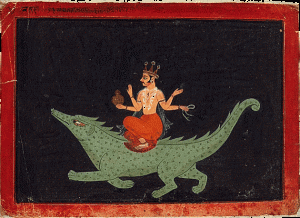
The Sacral Chakra is symbolized by a vermilion-orange lotus with six petals representing the following six modes of consciousness: affection, ruthlessness, vision, derision, and doubt. It is located near the coccyx, just above the Muladhara chakra, while its central activation point is the pubic bone. It is associated with the element of water (the crescent moon in the flower), the sense of taste, confidence, sexual vitality, and its primary planet is the moon.
The direct translation of Swadhisthana is ‘one’s own abode.’ The deity associated with this chakra is the four-armed god Varuna, who is often depicted riding on a crocodile named Makara. Varuna is the god of water in the underworld, personifying the power of the bodies liquid elements; blood, lymph, semen, urine and saliva. This is why the moon planet is such a powerful symbol with this chakra, as it controls the moving ‘tides’ in our waters.
When this chakra is balanced we feel full of wonder and awe for our connection to the greater cosmos. We are more adaptable and able to go with the flow of life. With the activation of Swadhisthana we begin to develop a sense of personality and self-esteem, as our body-awareness increases so does our sense of groundedness and emotional intuition. The majority of people, especially in Western cultures, experience a blockage of this Chakra, usually because of nature-deprivation and an overall lack of awareness of the interconnectedness of all things.
When this Chakra is blocked we may feel an inability to ground ourselves, jealousy, guilt, not able to set healthy boundaries and attach too much importance on immediate gratification. Nothing seems good enough because we’re never satisfied, and depression inevitably ensues. Also, eating disorders tend to be a manifestation of an imbalanced Sacral Chakra.
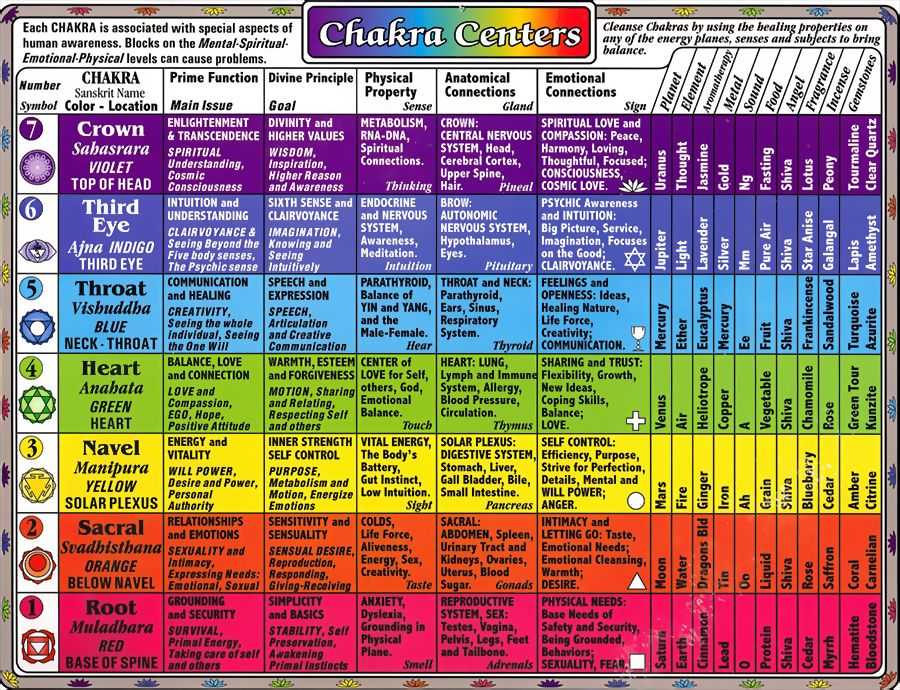
Sacral Chakra Meditation/ How to Open the Sacral chakra
Wear something orange, or imagine the color orange. While you are meditating, visualizing or imagining, focus your energy (or Qi) on the navel. The Sacral Chakra is fairly easy to access and transform as it responds to emotional and creative self-expression. Notice how you feel about your connection to your body and your body’s fluid connection to the cosmos.
Literally lay your hands on your stomach, Reiki-style, if you have to. Imagine your emotional, spiritual, mental and physical ‘fluids’ flowing out into the cosmos like rivers into an ocean. Visualize yourself moving with the ‘tide’ of your body’s natural rhythm in balance with the greater cosmic rhyme. Standard practices in Kundalini yoga for balancing the energy in the Sacral Chakra include vajroli mudra (contraction of the genitals), ashvini mudra (contraction of the anus).
With the opening of the Sacral Chakra, Kundalini has become aware of itself. As it moves its way up, our consciousness begins to blossom. Our power is growing, our ability for self-transformation is beginning to manifest. The spark has struck the kindling of our spirit, and the next level, the Manipura Chakra, is the resulting fire.
KUNDALINI RISING, PART 3: THE SOLAR PLEXUS CHAKRA
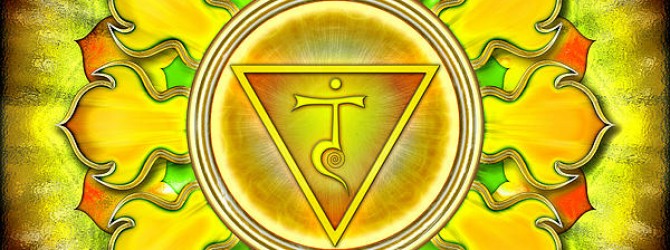
“The Manipura Chakra is as radiant and bright as the sun dominating the dawn. Draw in the prana and hold it there while meditating on the fire element. This meditation dispels the deeply ingrained fear of death” – Gheranda Samhita, one of the three classic texts of Hatha yoga.
As we rise up through the seven blossoming Chakras, with the corporeal energy of Kundalini in tow, we become more aware of our divine union with all things. We discover that the universe itself is a giant blooming flower in and of itself, and we are its slowly opening eye. Conscious awareness is upon us. Our vehicle is the divine feminine, Shakti. We are ready to be transformed, and fire will be the medium of our transformation.
In our last article we opened the Swadhisthana Chakra, or Sacral Chakra. Kundalini has been awakened and has now moved up to the third level: The Manipura, or Solar Plexus. The fundamental quality of this chakra is transformation. The fiery aspect of this Chakra makes it the seat of our unique identity, where we are free to project our power and charisma into the world. This is where our Will to Power (Nietzsche) and self-discipline become manifest. Just as fire transforms solids into liquids and liquids into gas, the inner fire transforms our unconscious into conscious awareness. The Manipura is our energy center, radiating vital prana, the sum total of all energy that manifests in the universe, throughout our entire body.
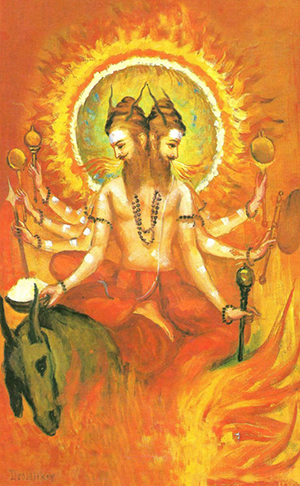
The Manipura is symbolized by a yellow lotus with ten fiery petals. It is located in the area of the solar plexus just above the navel. It is associated with the element of fire (the inverted red triangle), so the sun is a popular symbol, but its primary planet is Mars. The direct translation of Manipura is “The City of Jewels.”
The main deity associated with this Chakra is the Hindu deity Agni, God of Fire, who has two heads, one denotes the creative aspect of fire and the other denotes its destructiveness. He is ever-young, being born and reborn every day in the crucible of his own fire. A lesser deity associated with this chakra is Rudra. His name has been translated as, “The Howler;” and so he howls inside us, turning ‘red’ with passion and a will toward a higher calling.
It is also associated with digestion and movement. In this respect, our emotional self and mental correlate which are found within intuition and “gut feelings.” When this Chakra is balanced we feel endowed to lead our lives with dynamism, power and authority. Self-love is important here. When in tune and balanced, our solar plexus puts the ego-mind (or small mind) in check, and then Big Mind is free to engage and ‘feel’ the cosmic threads that bind and connect all things. boosts self esteem, respect for others, calmness and initiative. You feel friendly, joyful and confident.
By meditating on this Chakra one is said to attain the prana to create or destroy the world. In this respect, an over-active Solar Plexus Chakra can lead to arrogance, conceit, and self-centeredness. If this happens we run the risk of becoming power-hungry, one-right-way, egotists. When this Chakra is under-active, or blocked, we tend to feel unworthy and have a low self-esteem. Our emotional state is one of depression and anxiety. We tend to be doubtful and mistrusting toward others. This kind of stress can lead to a plethora of physical problems: poor digestion, ulcers, diabetes, liver or kidney problems, anorexia, bulimia, and even intestinal tumors.
Solar Plexus Meditation/ How to Open the Solar Plexus chakra
Wear something yellow, or imagine the color yellow. Better yet, meditate in front of a fire or a candle. While meditating, focus your prana on the solar plexus. Imagine a bright yellow Chakra spinning there, like a radiant sun. Imagine this internal sun nourishing your core, bathing your digestive organs in healing light, just as the external sun nourishes your skin.
Notice how you feel as a Differentiated Unity in the greater undifferentiated cosmos. Feel the benevolent power of the universe. Allow it to pour into you in the form of charismatic confidence and transformative control. Allow it to guide you up to the next level; to the fourth chakra: The Heart Chakra, the Anahata.
KUNDALINI RISING, PART 4: THE HEART CHAKRA
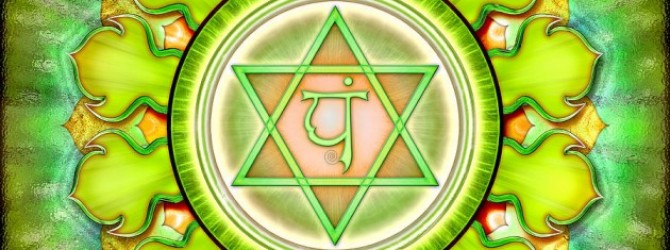
“If you’re really listening, if you’re truly awake to the poignant beauty of the world, your heart breaks regularly. In fact, your heart is made to break; its purpose is to burst open again and again so that it can hold evermore wonders.” ~ Andrew Harvey.
Imagine Kundalini as a divine snake moving up your spine, causing each chakra it passes through to blossom. The more we meditate on this type of energy, the more we allow our personal frequency to resonate with the greater orchestra of the cosmos. And the more we allow our frequency to resonate, the more balance and health we will experience in our lives. This article will discuss the profound significance of the fourth chakra: Anahata, the heart chakra.
Before reaching the heart chakra, we were bound by the laws of karma. With the merging of the divine feminine and the divine masculine, we gain the ability to make our own decisions. We become an aspect of Karma itself.
This chakra is the balancing pivot between the three lower and three higher chakras. Here, our higher nature has the potential to become manifest. We are now free to “follow our own heart.” We have discovered that sacred place where the sages can hear the secrets of the universe: a language older than words.
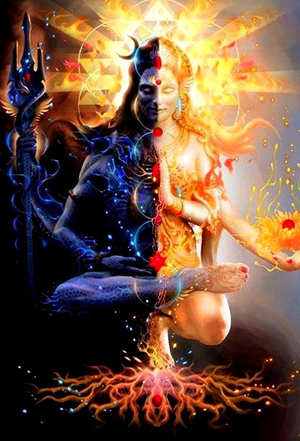
The Anahata is symbolized by a smoke-green lotus with twelve petals, known in Buddhist circles as the heartmind. It is located in the chest, while its central activation point is the heart. In the center of the lotus are two intersecting triangles, forming a hexagram, which symbolize the union of the divine masculine and feminine. The triangle facing upward symbolizes Shiva, the male principle; while the triangle facing downward symbolizes Shakti, the female principle.
It is associated with the element of air, the sense of touch, and the planet Venus. Heart chakra is the seat of Vital Breath, like water (Sacral Chakra), air assumes the shape of whatever it fills, yet it is less subject to gravity than water, and so we may require a replanting of our root chakra in order to remain grounded.
Air is breath, and so it is vital that it be free, but it can also overwhelm us if not balanced properly. Like Blaise Pascal wrote, “The heart has its reasons that reason knows nothing of.”
The deity associated with this region is Vāyu, Lord of the Winds, who is often depicted riding an antelope. He is also known as prāna, “the breath,” and so he personifies the five vital forces of prana: Prana vayu, Apana vayu, Samana vayu, Udana vayu and Vyana vayu, which all circulate through the body and connect us to the vatavaran, Sanskrit for “atmosphere.”
His greatest lesson is in connecting us with the Cosmic Breath, where the vibration, magnetism, and resonance of the universe is free to move through us and begins to provide us with sacred synchronicities.
When this chakra is balanced we are filled with unconditional love for self and others, what the Buddhists call Mahakaruna “the Great Compassion.” We are filled with appreciation, joy, and happiness. When this chakra is opened the Higher Self is free to emerge and resonate with higher frequencies. We are free to recognize the importance of Namaste: “the divine within me recognizes the divine within you.”
When this chakra is blocked, however, we tend to experience poor circulation on the physical level, we tend to lack empathy on the emotional level, and we tend to lack devotion on the spiritual level. Our hearts become closed and hard. We have trouble loving ourselves, and we are therefore paranoid and afraid to love others.
Many issues of love, grief, hatred, anger, jealousy, fears of betrayal, of loneliness, as well as the ability to heal ourselves and others are centered in the fourth chakra.
Heart Chakra meditation/ How to Open the Heart chakra
While meditating, focus your prana on the heart. Breathe and be Breath. Imagine vital air emanating from this chakra, resonating through your body and out, connecting you to the greater cosmos. Feel the life-giving air invigorate and rejuvenate your heart chakra. Imagine this connection nourishing your soul, bathing your heart and skin in healing spirit.
Touch is important with this chakra, so “feel” the cosmos pressing against your skin. “Feel” your skin absorbing the cosmos. And then realize, in the deepest most fundamental part of yourself, that there is no separation. Disconnection is an illusion. We’re always connected to everything. Awareness is the key. We become more aware by being and becoming with each breath. The Door of Life has been opened. Allow the Vital Breath to guide you up to the next level; to the fifth chakra: The Throat Chakra, the Vishuddha.
KUNDALINI RISING, PART 5: THE THROAT CHAKRA
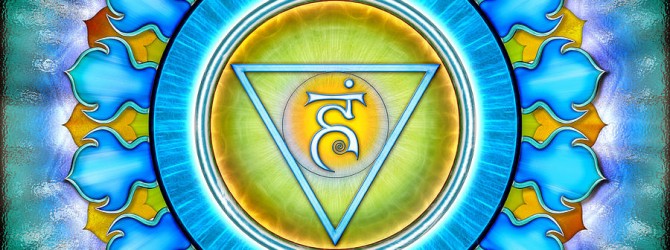
“Raise your words, not your voice. It is rain that grows flowers, not thunder.” ~ Rumi
As Kundalini energy rises up through the chakras it becomes more ethereal and dynamic. The more we meditate on in this kind of energy the more we gain spiritual confidence. Our ego-centric Will is fast transforming into soul-centric expression. This article will discuss the expressive significance of the fifth chakra: Vishuddha, the throat chakra.
The Door of Life has been opened. The Vital Breath has been circulated. We have now moved up into the higher chakras. The throat chakra is the first of these, associated with the faculty of higher discrimination, creativity, and self-expression.
Known as the purification center, the Vishuddha chakra gives voice to our spirit. Also known as the “poison and nectar” center, it is said that amrita, or “nectar of the gods,” is secreted from this chakra when activated. Once amrita is tasted, our voice reflects the condition of our mind. Here, our highest expressions become manifest. We are now free to “say what we mean and mean what we say.” We have discovered how God’s Tongue is our own.
The Vishuddha chakra is symbolized by a sky-blue lotus with sixteen petals. It is located at the back of the neck, while its central activation point is in the throat. In the center of the lotus is a downward-facing triangle with a circle inside it, representing the element of ether.
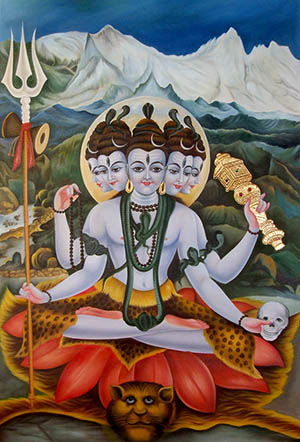
It is associated with the sense of hearing and the planet Mercury, and is often associated with the thyroid gland in the human endocrine system. With the purification of the Vishuddha chakra, Deep Listening becomes another essential skill. By listening with conscious intent, deep knowing arises; through deep knowing, a deeper being results.
The deity associated with this region is Sadashiva, a five-headed, ten-armed god/goddess usually clad in a tiger skin. Sadashiva personifies the balance of yin and yang. This region is also represented by the deity Ambara, who is usually seated upon a white elephant.
The challenge of the Vishudda is to learn how to express ourselves in the most truthful manner. When this chakra is clear we gain the ability to allow the Divine Breath to activate our vocal organs. Our speech becomes uplifting and wise and we can communicate clearly our intent. We are able to transform negative experiences into wisdom. We make manifest the old African proverb, “Through mistakes one becomes wise.”
When this chakra is closed or blocked we experience poor communication and laryngitis on the physical level, codependency on the emotional level, unclear thoughts on the mental level, and insecurity on the spiritual level. We often speak without thinking and have trouble expressing ourselves in an authentic way, and we may have issues with tact and timing.
Throat Chakra meditation/ How to Open the Throat chakra
While assuming a meditative pose that purifies the Vishudda (i.e., salamba sarvangasana, jalandhara bandha or khecarī mudrā), focus your prana on the throat region. Breathe in the Vital Breath. Visualize a bright sun rising up into your throat from your Solar Plexus.
Imagine it washing over your vocal chords and emboldening divine expression. Further imagine it untangling any “knots in the throat.” Chanting mantra is especially important while meditating on this chakra, as it has the potential to transform Avidya (that which is ignorant, delusional, and unwise within) into Vidya (that which is knowledgeable, coherent, and wise within). Allow yourself to project your sacred utterance and numinous voice into the mighty ether of the cosmos.
With the opening of the Throat Chakra, Kundalini energy has now moved into the Cosmic Eye. The end of duality is upon us. Our ego-centric power is transforming into soul-centric authority. Our ability for spiritual transformation is becoming manifest. The spark that struck the kindling of our heart chakra became the fire that now emanates the white-hot heat of our soul rising up through the throat chakra and up to the next level, to the sixth chakra: the Ajna Chakra, the mighty Third-eye. What we see will change us forever.
KUNDALINI RISING, PART 6: AJNA, THE THIRD-EYE CHAKRA
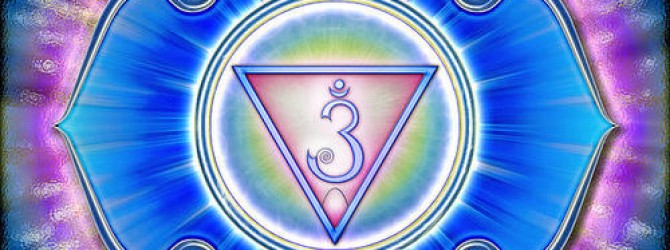
“The eye through which I see God is the same eye through which God sees me.” – Meister Eckhart
As Kundalini energy rises up from the lower elements of earth, water, fire, air and ether, it enters into the realm of light. Our Ego-centric Will has become Soul-centric Intent. Our individual ego has now merged with Cosmic Mind. Personal mastery is at hand, but spiritual myopia is ever-present. This article will discuss the paramount significance of the sixth chakra: Ajna, the Third Eye.
The Third Eye has been opened. We have now moved into the “command center” of the Kundalini process. Ajna means “to command,” through this chakra we can learn how to master our minds. Where before we were under the illusion that all things were separate and disconnected, we gain the ability to see how everything is interconnected, how we are all truly one.
Wisdom is a boon in this region. But we must remember that true mastery is not mastering others; it’s mastering our former self. Like Nietzsche wrote, “Only now are you going your way to greatness. Peak and abyss, they are now joined together, for all things are baptized in a well of eternity, and lie beyond good and evil.”
The Ajna chakra is symbolized by a violet lotus with two petals. It is located directly behind the forehead. It is the seat of consciousness as well as our “sixth” sense, often referred to as the psychic chakra. The two petals represent the primordial duality of subject and object, otherwise known as the psychic channels Ida and Pingala. These two channels merge with the central channel Sushumna, signifying the end of duality.
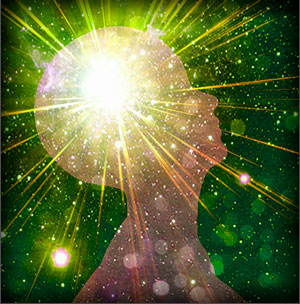
In the center of the lotus is the symbol for OM, or Omkara, a mantra and mystical Sanskrit sound of Hindu origin. This chakra is associated with intuition and the planet Jupiter, and is often associated with the pineal gland, a small endocrine gland in the vertebrate brain that is believed to be the biological equivalent of the third eye.
If, as Yogi Bhajan said, “Going through life without intuition is like driving a car which has no side mirror and no rearview mirror. All you can see is just straight ahead” then it behooves us to keep this chakra clear and healthy. The deity associated with this region is Ardhanarishvara, an androgynous form of Shiva-Shakti, symbolizing the duality of male feminine energy.
A less common name for this chakra is jnana padma or “knowledge-lotus.” It bestows upon us the wisdom to act rationally and without judgment. A person with a strong Ajna Chakra has greater intuition, a strong sense of identity, and the ability to self-reflect. When this chakra is clear we gain the ability to see ourselves and others as spiritually interconnected beings.
The challenge of the Ajna chakra is to learn how to see beyond the five body senses by trumping the Ego with Cosmic Mind. When this chakra is closed or blocked we tend to lack in imagination and intuition resulting in poor decision making and self-deception. Physically, third eye weakness may manifest as eye problems, headaches, insomnia, or even nightmares.
Ajna Chakra Meditation/ How to Open the Ajna chakra
Kundalini meditation contains many profound techniques for this chakra. Consistent focus on this energetic center is extremely powerful. Tratak (steady gazing) and Shambhavi Mudra (gazing at the space between the eyebrows) are two practices said to stimulate the third eye. While meditating, visualize a luminous ball of warm indigo energy spinning slowly at the center of your forehead.
Imagine it shooting powerful bands of light down and through the lower chakras, filling your entire being with divine light. The Tratak meditation is best accomplished using candlelight, by gazing at the flame without blinking, holding your gaze for 2 minutes then gently close your eyes and “see” the flame in your mind’s eye. Thus awakening and energizing the third eye.
With the end of duality and the opening of the Cosmic Eye, we are now moving up into pure consciousness. Self-actualization is upon us. In Tibetan Buddhism the third eye chakra is the last of the chakras. In Kundalini Meditation there is a seventh, final chakra: The Sahasrara chakra, the Crown Chakra.
KUNDALINI RISING, PART 7: THE CROWN CHAKRA
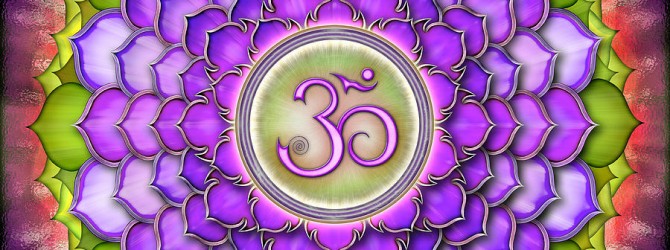
“What you do is what the whole universe is doing at the place you call the here and now. You are something the whole universe is doing in the same way that the wave is something that the whole ocean is doing. The real you is not a puppet which life pushes around. The real deep-down you is the whole universe.” – Alan Watts
As Kundalini energy rises up from the lower chakras, we enter into the realm of pure consciousness. The Vital Breath has been inhaled, the Sacred Utterance has been spoken, the Divine Light has been felt, and the Third Eye has been opened. We now know the truth that only higher consciousness can bring: one is all and all is one. We are now, and forever more, receptive to stimuli to which, in the time before, we were insensate. Shakti has removed the Veils of Maya (illusion), which have evaporated like a mirage. This article will discuss the eternal significance of the seventh and final chakra: Sahasrara, the Crown Chakra.
We have now ascended the chakra from which all chakras emanate. We have achieved the last milestone of human awareness, the pinnacle of the human spiritual condition. Here, sacred energy is infinite and wisdom is pure and eternal. Before, things were merely relative. Now, things are absolute. We have obtained a state of Nirvikalpa Samādhi, a state of non-duality where we realize we are one with the cosmos and everything in the cosmos is one with us. A singularity of self has been reached.
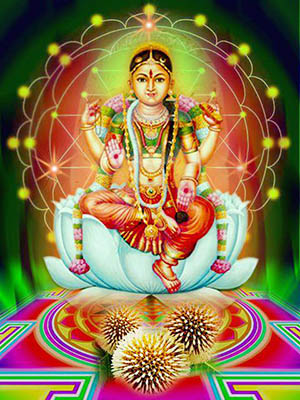
The cosmos has emptied its energy into us, as we have emptied our energy into it. Everything is now an eternal beacon of providence. Like Alan Watts said, “God emptied to the limit is man, and man emptied to the limit is God.”
The Sahasrara chakra is symbolized by a lotus with a thousand different colored petals, arranged in twenty layers of 50 petals. It encompasses the crown of the head, where all chakras are integrated, while it passes into infinity from the top of the head. It is said to be the most elusive chakra in the kundalini process. This chakra is associated with wisdom, enlightenment and transcendence. Its governing planet is Uranus, and it is often linked to the pituitary gland.
The presiding Deity of the Sahasrara Chakra is Shri Lalita Devi, or the Thousand Named Goddess. It is said that she gives us the power to awaken the kundalini in others, upon awakening ourselves. As the Paraclete Shri Mataji is known to have said, “This center of a thousand petals covers the limbic area of the brain like the closed bud of a lotus. Above this covering is the balloon-like structure of ego and superego.
As the brain is covered completely when these two institutions join and calcification takes place on top of the head; that is how we become a closed personality. At the time of our awakening, of our second birth, this egg-like personality breaks at the top of the head.”
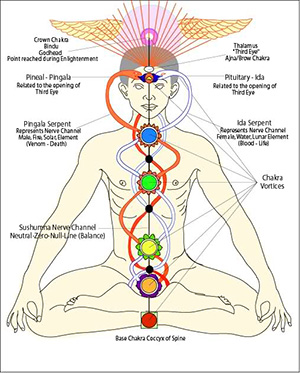
The true nature of the seventh Chakra is beyond human comprehension. No words can do it justice. When our crown chakra is cleansed and open we experience divine union and cosmic love, stretching out forever. Vibratory awareness becomes paramount as kundalini unites us with the infinite wavelength of eternal vibration. Our unique frequency is in tune with the cosmic orchestra. The Collective Unconscious has become manifest.
When our crown chakra is blocked or closed, however, we feel disconnected spiritually. We tend to doubt everything we’ve known to be true. In worst case scenarios we tend to fall into an existential blackhole, or Dark Night of the Soul.
Here’s the beautiful double-edged sword of spiritual enlightenment: if we are able to make it through these dark times and shed that which weighed us down, then our crown chakra opens up once again, even wider than before, and we once again become receptive to stimuli to which before we were insensate. This can happen many times on our spiritual journey, and each time we tend to gain new levels of wisdom.
Sahasrara Chakra Meditation/ How to Open the Sahasrara chakra
This chakra, more than any other, is about complete surrender and dissolution; a letting go of the hold the physical world has on us. While meditating with your hands over your solar plexus, let the little fingers point up and away from you, touching at their tips, while braiding the rest of the fingers with the left thumb underneath the right. Open the third eye, and focus upon the thousand-petaled crown splintering off into the cosmos.
Feel the powerful kundalini energy pooling up from your roots, passing through the sacred waters of the sacral, basking in the fire of the solar plexus, breathing in the vital breath of the heart, absorbing the ethereal voice of the throat, pouring through the dissolution of the Third Eye, and spilling up and out like a mighty fountainhead into the greater cosmos.
Imagine kundalini circulating through your body, from Crown to Root and back again, over and over. Further imagine the universe as a giant mirror, while heeding the wisdom of Khalil Gibran, “Beauty is eternity gazing at itself in a mirror. But you are the eternity and you are the mirror.”
© 2014-2024 crystalwind.ca. All rights reserved. Hidden code is embedded for tracking purposes. We track all IP addresses using sniffer technology. Note: Using a Proxy/VPN/Tor will not hide your IP address. If this article is duplicated from our website we will be alerted and will take necessary action.
Liked this article? Dive deeper into personal growth and wellness! Check out CrystalWind.ca for spiritual wisdom or explore AromaWorx.ca for natural well-being tips. Spread the positivity—share this with friends on their happiness journey!
Let’s Chat! Drop Your Thoughts Below! ![]()
Latest Articles
Dive into the Mystical World of the Crystal Wind Oracle Deck!
Get All the Enchanting Details Now!
NEW Expanded Boxed Edition!
Now with 58 Cards for Richer Wisdom!

Imagine a world of inspiration and healing, free for all—made possible by YOU!
Donate Now—Ignite the Magic at CrystalWind.ca!

Epilepsy - Finding A Cure
Your donation can make a difference!
Help us find a cure – donate now!
Unlock Your Light: Join Lightworkers Worldwide on CrystalWind.ca!
Articles: Auras and Chakras
Follow Us!
Featured This Month
Abalone Shell
Echos Of The Ancestors Abalone strengthens the structure of the body and th... Read more
Egyptian Zodiac/Astrology
Egyptian astrology was one of the earliest forms of astrology. The Egyptians w... Read more
Sun in Cancer
Cancer Sun Sign Characteristics Overview The name "Cancer" comes from Latin, ... Read more
Lugh - Celtic God Of The Sun
The god Lugh was worshiped in Ireland as a deity of the sun. This connection... Read more
Cancer Mythology
The Mythology of Cancer: A Celestial Tale of Loyalty and Sacrifice Among th... Read more
Chalcedony
The Stone Of Orators Chalcedony was very popular as a decorative stone in ant... Read more
Lammas by The Hedgewitch
Although in the heat of a Mid-western summer it might be difficult to discer... Read more































































































































































